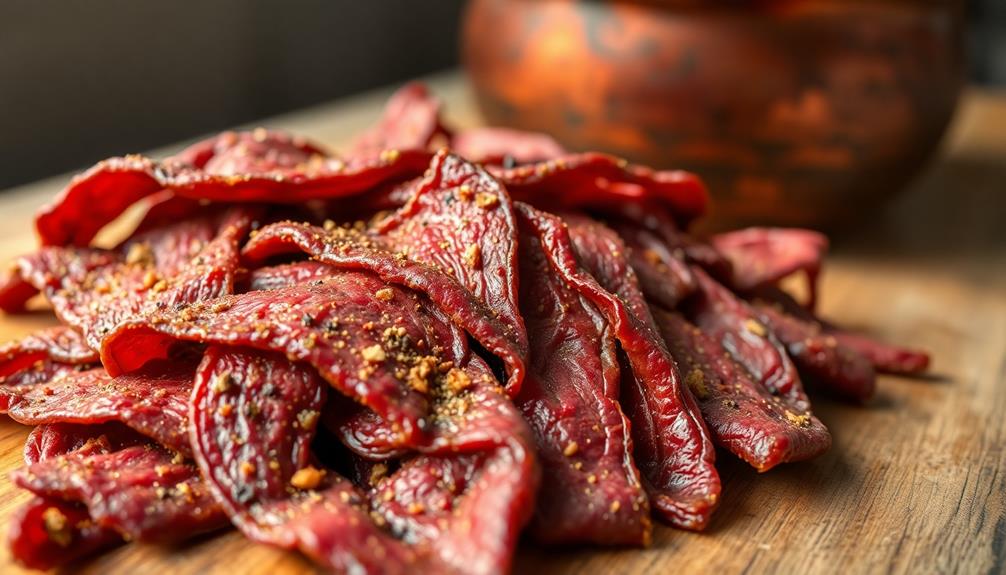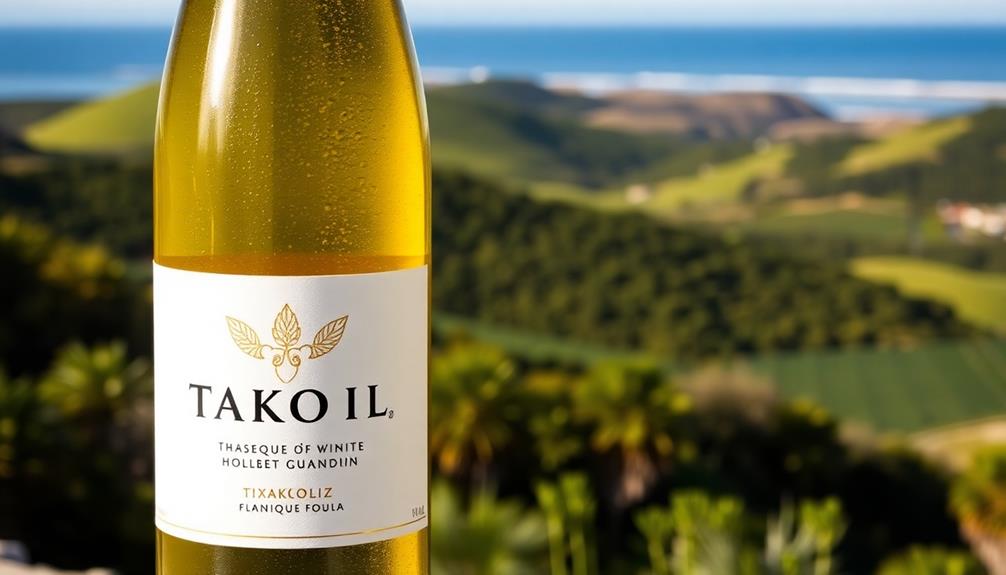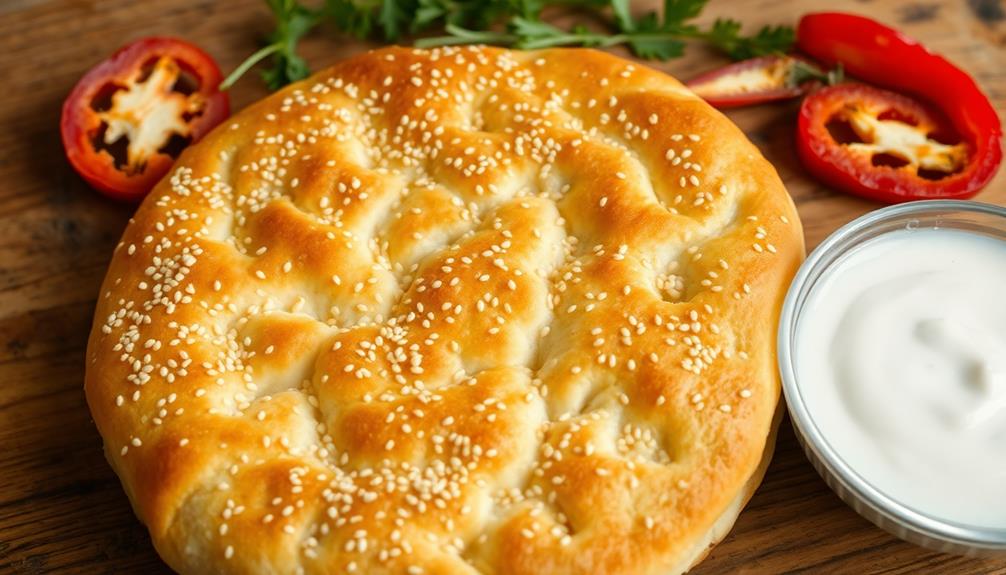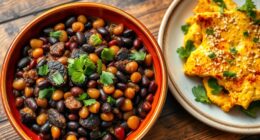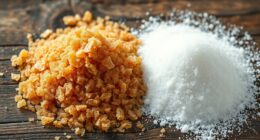Kawarma is a delectable preserved meat dish with ancient roots in the Middle East. Over centuries, people in this region developed ingenious techniques to preserve meat during times of scarcity. They'd dry and salt the meat, seasoning it with a blend of aromatic spices and herbs. This not only helped the meat last longer, but also infused it with rich, mouthwatering flavors. Today, kawarma remains an integral part of the region's culinary heritage, showcasing the resilience and ingenuity of its people. Crafting this captivating dish involves a multi-step process, from trimming the meat to smoking it to storing it just right. Want to learn more about the art of making kawarma?
Key Takeaways
- Kawarma is a traditional preserved meat dish with origins in the Middle East, developed to ensure long-term meat storage during times of scarcity.
- The preparation involves drying, salting, and seasoning the meat with spices and herbs, which enhances the flavor and aids in preservation.
- Kawarma is an integral part of the Middle Eastern culinary heritage, with regional variations that showcase the resilience and ingenuity of the people.
- The cooking process includes marinating the meat, searing it in hot oil, and simmering it to achieve a tender, flavorful result.
- Kawarma is celebrated as a link to the past and a testament to the resourcefulness of Middle Eastern communities in the face of limited resources.
History
Kawarma, a traditional preserved meat dish, has a rich history rooted in the Middle Eastern region. For centuries, people in this area have used ingenious techniques to store meat for long periods, ensuring a reliable food source during times of scarcity.
The process of making kawarma involves meticulously drying and salting the meat, often using spices and herbs to enhance the flavor. This preservation method not only extends the meat's shelf life but also imbues it with a unique, intensely savory taste.
As communities in the Middle East faced environmental challenges and limited access to refrigeration, kawarma became an integral part of their culinary heritage. The dish evolved, with different regions developing their own variations, each reflecting local ingredients and cultural traditions.
Today, kawarma remains a beloved staple, enjoyed not only for its practical benefits but also as a cherished link to the past, celebrating the ingenuity and resilience of the people who perfected this remarkable food preservation technique.
Cooking Steps
Once the meat is prepared, you can begin the cooking process. First, you'll want to gather your ingredients – the marinated meat, some oil, and any spices or herbs you'd like to add.
Heat the oil in a large pan over medium-high heat. When the oil is hot, carefully add the meat. Be cautious, as the hot oil may splatter! Let the meat sear for a few minutes, giving it a nice golden-brown color on all sides.
Next, reduce the heat to low and cover the pan with a lid. This will help the meat cook through without burning the outside. Let it simmer for about an hour, stirring occasionally, until the meat is incredibly tender. The long, slow cooking is what gives kawarma its signature texture and flavor.
Once the meat is cooked through, you can remove the lid and let any excess liquid evaporate. This will help create a thick, rich sauce coating the meat.
And there you have it – perfectly cooked kawarma, ready to enjoy!
Step 1. Trim Meat Into Thin Strips
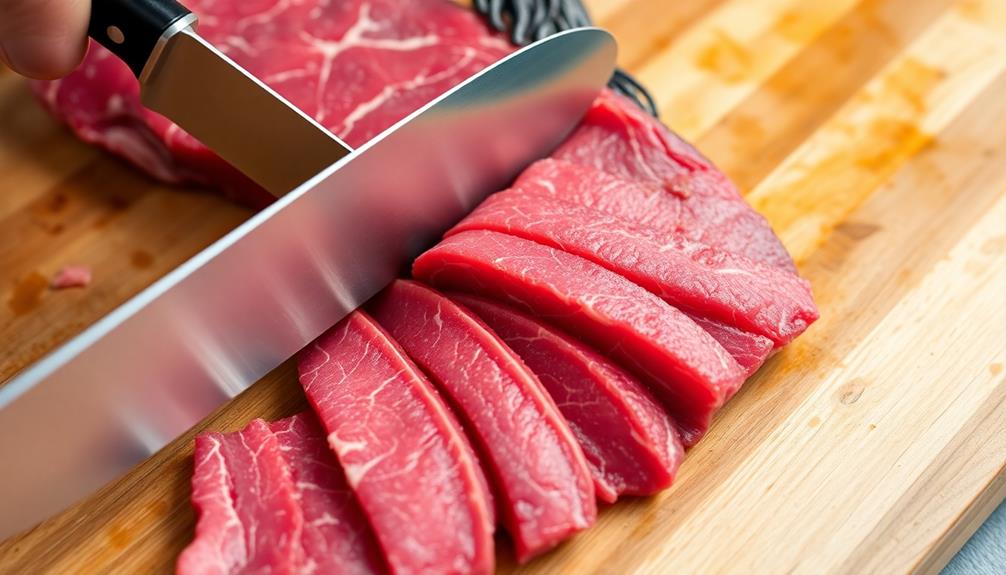
Begin by trimming the meat into thin, even strips, about 1/4 inch thick and 2-3 inches long.
You'll want to use a sharp knife for this task, carefully slicing the meat against the grain. Take your time and focus on creating uniform pieces, as this will help them cook evenly later on.
Once you've got all the meat sliced, it's time to give them a quick rinse under cold water. This helps remove any impurities or excess fat.
After rinsing, pat the strips dry with a clean kitchen towel or paper towels. Ensuring the meat is dry is crucial for the next steps in the preservation process.
With your perfectly portioned meat strips ready, you can now move on to the next phase of making delicious kawarma.
Step 2. Soak Meat in Brine Solution
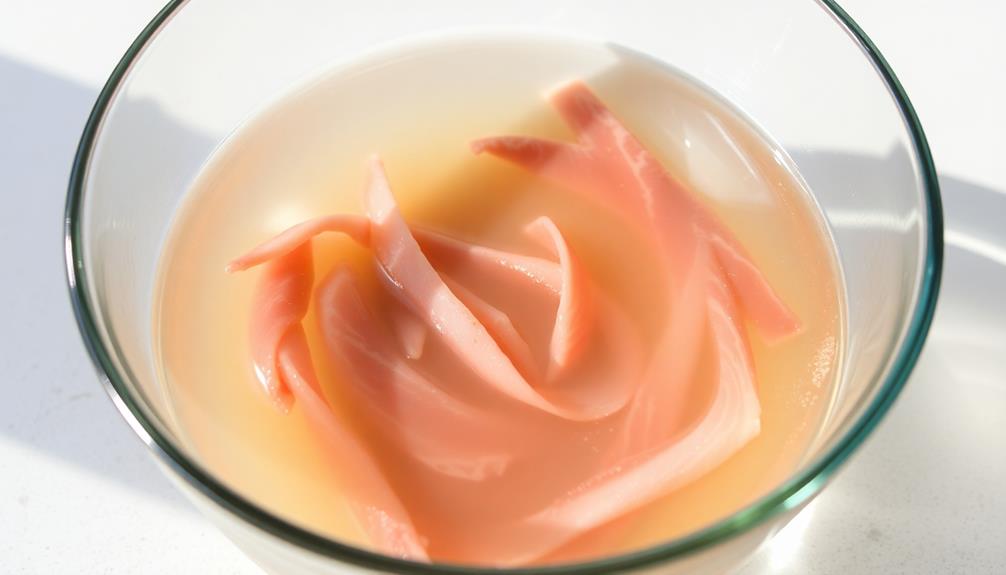
With the meat strips neatly prepared, you'll now create a brine solution to soak them in. In a large bowl, combine water, salt, and any desired spices. Stir the mixture until the salt fully dissolves, creating a flavorful brine.
Gently place the meat strips into the brine, ensuring they're fully submerged. Cover the bowl and let it rest in the refrigerator for several hours, or even overnight. This brining process infuses the meat with delicious seasoning and helps preserve it.
As the meat soaks, the brine will draw out excess moisture, concentrating the flavors. The salt in the solution also inhibits the growth of harmful bacteria, making the meat safer to consume.
Once the brining is complete, remove the meat strips from the brine and pat them dry with paper towels. They're now ready for the next step in the kawarma preservation process. Get excited, because your homemade kawarma is well on its way!
Step 3. Air Dry Meat Strips
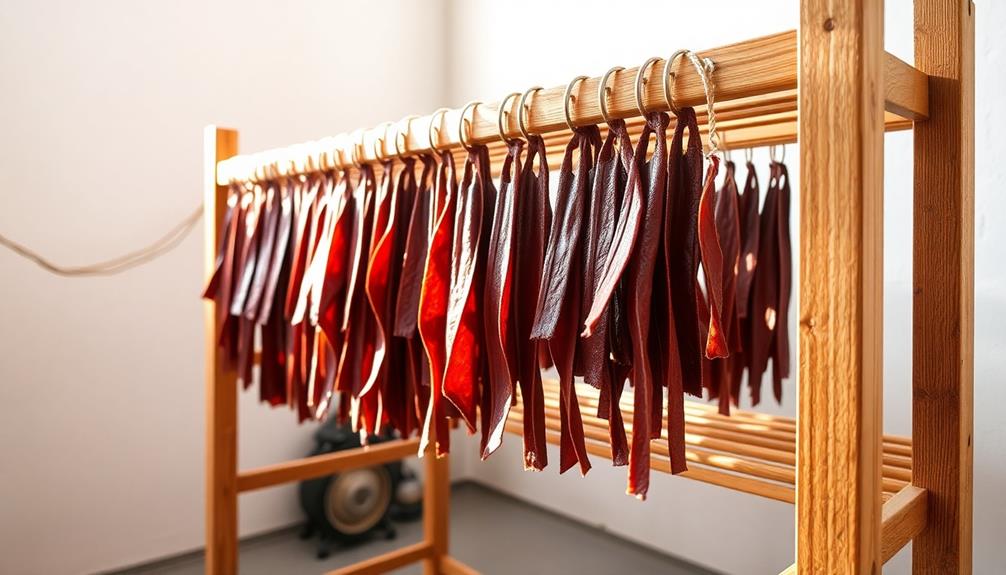
After the meat strips have finished brining, it's time to air-dry them. This stage is crucial for creating that classic kawarma texture – chewy, but not too tough.
Grab your meat strips and hang them up in a well-ventilated area, away from direct sunlight. You want a gentle breeze to circulate around them as they dry. It'll take a few hours, so be patient!
Keep an eye on them, making sure they're not getting too dry or crispy. Once they've developed a leathery, slightly shriveled appearance, you're ready for the next step.
Be careful when handling the strips – you don't want to break them. Gently transfer them to a clean surface, ready for the final touches.
Air-drying is a delicate process, but it's worth it to achieve that authentic kawarma flavor and texture. With a little TLC, your meat will be primed for the next phase of preservation.
Step 4. Smoke Meat Strips Over Wood
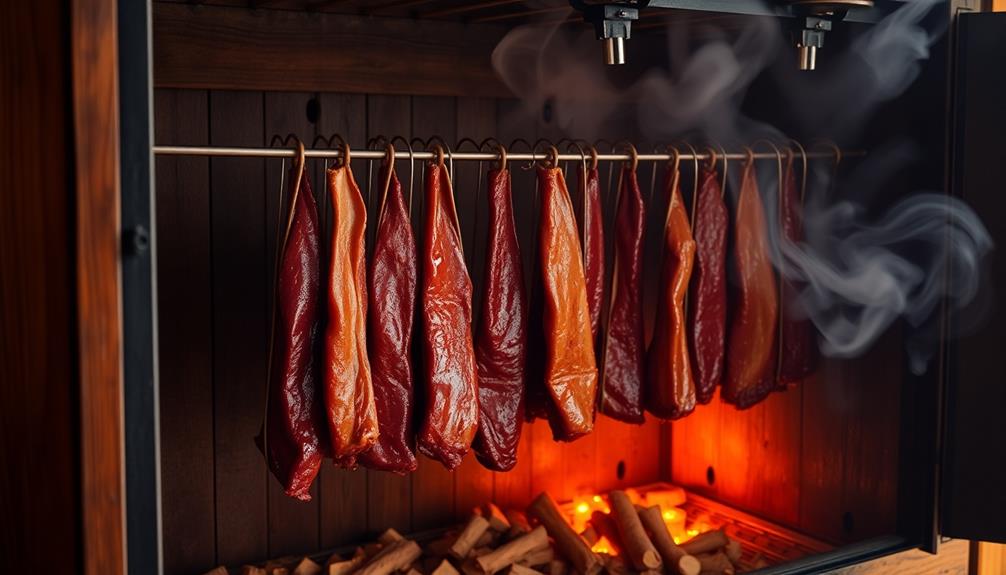
Once the air-dried meat strips have acquired the desired leathery texture, it's time to smoke them over wood. This step adds a delightful, smoky flavor that'll have your taste buds dancing.
First, gather some hardwood chips or chunks – oak, hickory, or mesquite work great. Soak the wood in water for at least 30 minutes to create a nice, steady smoke.
Next, set up your smoker or grill for indirect heat. Place the soaked wood over the heat source, then arrange the meat strips on the grates, making sure they don't touch. Close the lid and let the magic happen!
Smoke the meat for 2-4 hours, depending on the thickness of the strips, until they've acquired that irresistible, deep-smoked aroma. Keep an eye on the temperature, ensuring it stays between 200-225°F for best results.
Once the meat is perfectly smoked, remove it from the heat and let it cool slightly. Now, you're ready to enjoy the savory, smoky goodness of your homemade kawarma!
Step 5. Store in Airtight Container
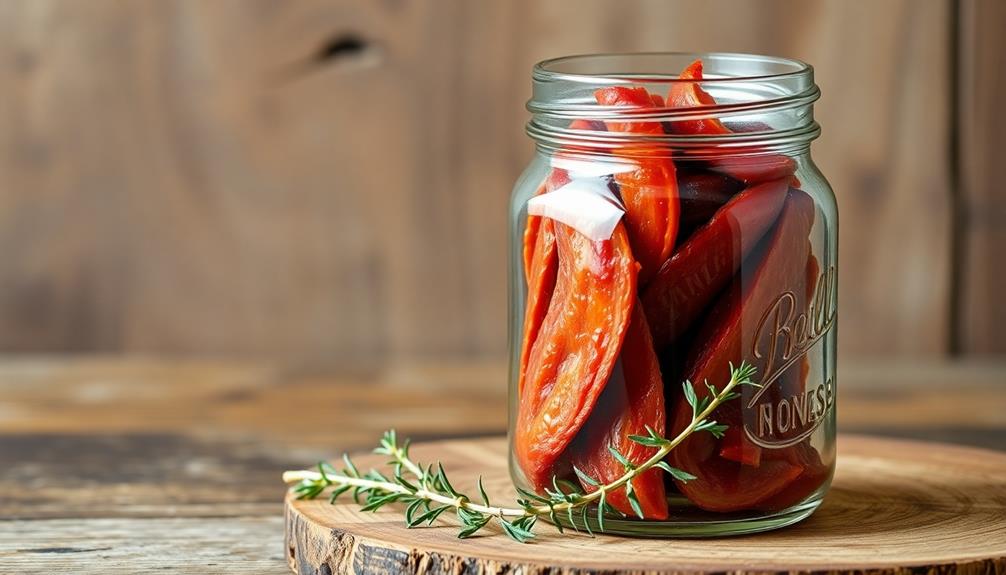
To store your homemade kawarma properly, you'll need an airtight container. This will keep your delicious preserved meat fresh and flavorful for weeks.
Simply place the smoked meat strips into the container, making sure there's no air pockets. Seal the lid tightly, locking in that smoky goodness.
Now, where should you store your kawarma? The best spot is in a cool, dry place, like a pantry or cupboard. Avoid the fridge or freezer, as the fluctuating temperatures can dry out the meat.
Your kawarma will stay perfectly preserved at room temperature in its airtight home.
When you're ready to enjoy a tasty piece, just open the container and grab a strip. The kawarma will be bursting with that irresistible blend of spices and smoke.
Store it this way, and your homemade kawarma will stay fresh for up to two months. Easy peasy! Now you can savor the fruits of your labor for weeks to come.
Final Thoughts
Kawarma, the preserved meat delicacy, has undoubtedly captured the hearts and palates of many. As you've learned, the process of creating this unique food is both fascinating and intricate. From the careful selection of meats to the precise curing and drying techniques, every step is crucial in producing the rich, savory flavors and melt-in-your-mouth texture that make kawarma so special. If you’re a fan of kawarma, you may also be interested in learning how to make homemade sujuk. This Middle Eastern sausage is another popular cured meat delicacy that requires skill and patience to create. From grinding the meat and mixing in the perfect blend of spices to the careful process of stuffing and drying, mastering how to make homemade sujuk is a rewarding endeavor for any food enthusiast.
Looking ahead, the future of kawarma is bright. As more people discover this traditional gem, the demand for its authentic, handcrafted version is sure to grow.
Whether you enjoy it as a snack, an ingredient in your favorite dishes, or a centerpiece of a festive spread, kawarma offers a delightful taste of history and culture.
So, the next time you savor a bite of this preserved meat, take a moment to appreciate the skill and dedication that went into its creation.
Kawarma is truly a culinary treasure worth savoring and sharing with loved ones.
Frequently Asked Questions
How Long Can Kawarma Be Stored For?
You'll be amazed at how long kawarma, a type of preserved meat, can be stored!
Properly stored, it can last an incredible 6 to 12 months.
That's right, you can enjoy the delicious flavor of this special meat for up to a year.
Isn't that wild?
With the right storage techniques, kawarma is a fantastic long-lasting option.
Get ready to savor its unique taste for months on end!
What Are the Health Benefits of Eating Kawarma?
Eating kawarma can be a real treat for your body! This preserved meat is packed with all sorts of amazing health benefits.
It's a great source of protein, which helps build and repair your muscles. Plus, it's got lots of vitamins and minerals that keep your bones strong and your immune system healthy.
Can Kawarma Be Used in Other Dishes?
Yes, you can absolutely use kawarma in other dishes! Kawarma's rich, savory flavor makes it a versatile ingredient.
You can chop it up and add it to soups, stews, or rice dishes. Or try frying it up and serving it over a salad for a tasty protein boost.
The possibilities are endless! Kawarma's unique taste and texture can really elevate all kinds of meals.
How Does the Taste of Kawarma Differ From Fresh Meat?
The taste of kawarma differs quite a bit from fresh meat. While fresh meat is juicy and tender, kawarma has a richer, more intense flavor.
It's been preserved and dried, so it has a chewier texture and a deeper, smokier taste. Don't worry – that doesn't mean it's tough or unpleasant.
It's just got a unique character that makes it perfect for adding big flavor to your favorite dishes.
Is Kawarma Only Made in Certain Regions?
Kawarma, a savory preserved meat, isn't just found in one region – it's enjoyed all around the world!
While the preparation may vary, the rich, concentrated flavor sets it apart from fresh meat.
Whether you're in the Middle East, Asia, or even parts of Europe, you'll likely find locals who've perfected their own unique kawarma recipe passed down through generations.
It's a truly global delicacy that brings communities together through its shared love of preserved meats.
